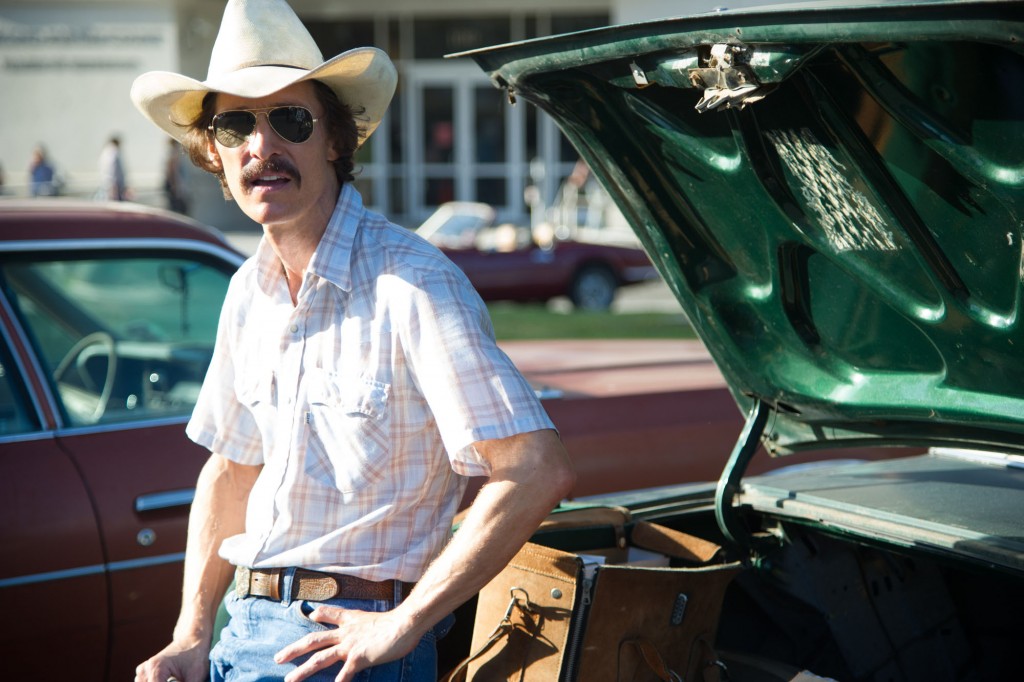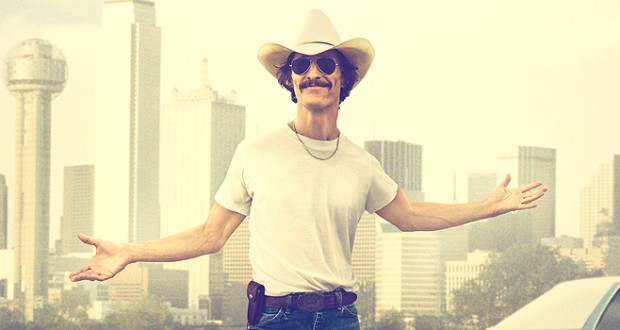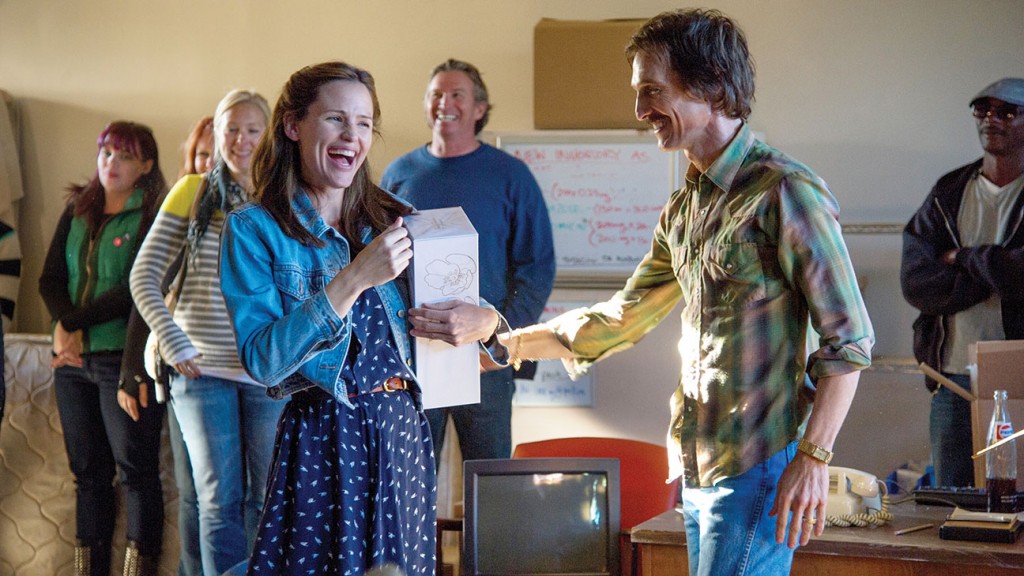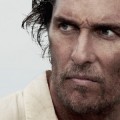As a big Matthew McConaughey fan, I was really looking forward to seeing Dallas Buyers Club. While the film has been out in the US since November last year, it was only released in the UK in February. Well, it was sure worth the wait. Focus features have brought us some brilliant films over the years, but this one is definitely way at the top of that list.
At first, the media attention on the film was mostly concerned with the amount of weight lost by both McConaughey (21kg) and Jared Leto (14kg) for their respective roles. However, once people had started to see the film, the media’s attention shifted to all the well-deserved awards that have flooded in. Both McConaughey and Leto won awards at the Golden Globes and the film has been nominated for six Oscars (which will be held on March 2, 2014). Does the film really deserve all of these industry folk falling all over themselves to hand out awards like candy? You best your ass it does!
Plot
Loosely based on the true story of Ron Woodroof (leaving out his family from the script, and creating the characters of Rayon and Dr. Saks out of an amalgamation of people in his life at the time), the film follows Woodroof (McConaughey) from his HIV+ diagnosis in 1985 and the years that followed.
Woodward found that the US health system was not making the necessary drugs available for HIV+ patients. He travels to Mexico and befriends a doctor there, who starts supplying him with a concoction of drugs that help him live well beyond the estimate given to him by his American doctors.
 To avoid FDA restrictions and legal entanglements, Woodroof creates the Dallas Buyers Club with the help of a transgender woman, Rayon (Jared Leto). He isn’t selling drugs to others (which is illegal); he is giving them away for free – to those who pay a club membership. These ‘buyers clubs’ were sprouting all over the country at the time.
To avoid FDA restrictions and legal entanglements, Woodroof creates the Dallas Buyers Club with the help of a transgender woman, Rayon (Jared Leto). He isn’t selling drugs to others (which is illegal); he is giving them away for free – to those who pay a club membership. These ‘buyers clubs’ were sprouting all over the country at the time.
Woodroof manages to catch the attention of the wrong people and has to battle the court system against the FDA. It’s the story of the little guy fighting ‘the man’ for what’s right. But, thankfully, it deftly avoids the after-school-special feeling.
From a rocky beginning to awards glory
The screenplay for Dallas Buyers Club began its life all the way back in 1992, with screenwriter Craig Borten approached Woodroof a month before his death. Borten was granted access to interviews, journals, and got in touch with those close to Woodroof. With multiple drafts of a script completed, Borten was unable to whip Hollywood into the frenzy he thought his script deserved.
 In the mid-1990s, Woody Harrelson was linked to the role of Woodroof, but they couldn’t secure funding. Similarly, Brad Pitt and Ryan Gosling have been linked to the role since then, but the project never gained traction. It wasn’t until McConaughey and Jean-Marc Vallée joined the project that the film finally became a reality.
In the mid-1990s, Woody Harrelson was linked to the role of Woodroof, but they couldn’t secure funding. Similarly, Brad Pitt and Ryan Gosling have been linked to the role since then, but the project never gained traction. It wasn’t until McConaughey and Jean-Marc Vallée joined the project that the film finally became a reality.
While the project was finally coming to fruition, the production troubles weren’t entirely solved. The budget was tiny – $5 million. Leaving the crew with only $250 for make-up (and despite this tiny budget, the film has been nominated for the best make-up Oscar) and no money for traditional lighting set-ups. It was filmed in 25 days with only one (hand-held) camera. It is refreshing to see what great artists can accomplish with so little.
The AIDS crisis as a character study
The topic of the AIDS crisis from 1979–1995, when AIDS was a death sentence, is a difficult subject to tackle. It could easily be very preachy, high horse, and a whole lot of hindsight. And what is the issue you should focus most on? It’s a quagmire out there, there’s too much that could be said about it. Using Woodroof’s story as a character study – making the film about him and his experiences rather than about AIDS – means the story is focused, powerful, avoids getting bogged down in trying to cover all the issues surround AIDS and HIV care at the time.
The film explores the attitudes around HIV and AIDS that existed at the time – and the eventual, slow progress that was made – through the examination of Woodroof’s experiences and changing beliefs. Today, there is a lot of public awareness around HIV – how you contract it, how to manage the disease (AIDS), etc. But in the 80’s, there was very little they knew about any of it. It had the stigma of being the ‘gay disease’ – the general populace was not aware that it could happen to anyone, no matter what their sexual preferences. The film even discusses the conspiracy theory that the CIA had released HIV as a way to kill off the homosexual population.
Through Woodroof’s eyes, we see the reaction of the world. At first, he is incredulous at his diagnosis, insistent that he isn’t gay and therefore shouldn’t have contracted HIV. He then begins to research his illness and learns that it is transmitted through shared needles and unprotected sex. Woodroof also experiences first-hand the prejudice and stigma attached to the disease, when his friends no longer want anything to do with him. He eventually warms to homosexuals and only has sex with women already infected with HIV.
The performances are outstanding, the script powerful without being preachy, and the production both moody and representative of Hicksville. The soundtrack includes my favourites, Tegan and Sara, along with Leto’s band 30 Seconds to Mars, AWOLNATION, My Morning Jacket, Neon Trees, T. Rex, and others.
Verdict: See this film, it is absolutely worth it. Just don’t expect something light-hearted and uplifting, or you’ll be disappointed.
 Pop Verse Pop Culture Universe
Pop Verse Pop Culture Universe







